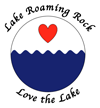Fertilizer Update – Annual Greening It Up
 By: original by Pam Hoover and updated by Tim Langer – Lake Management Committee
By: original by Pam Hoover and updated by Tim Langer – Lake Management Committee
Portions excerpted from ‘Green Up Your Lawn: Not the Lake’, by Betsy Washington, Lake Bancroft Assoc. website. Click here for the full article http://www.lakebarcroft.org/community/environmental-quality/green-your-lawn-not-lake.
Finally! Spring is really just around the corner, and with it comes the annual rite of greening up the American lawn. And with the greening of the lawn, comes the inevitable “peculiar green sheen” around the edges of our lake. This green sheen is NOT the type of green we are aiming for! Excess fertilizer, particularly phosphorus and nitrogen, running into the lake from improper agriculture and residential lawn fertilization, causes it.
Excess phosphorus and nitrogen not absorbed by the crops and lawns causes algal blooms that reduce water clarity and decrease dissolved oxygen levels when the algae decompose. Decreased levels of oxygen can stress and even kill aquatic life. Algal blooms tend to coincide with the most common times of lawn fertilization in spring and early fall. In fact, improper or excessive fertilization of lawns is one of the main sources of nutrient runoff pollution.
So what can you do to make sure your lawn care does not harm or contribute negatively to our lake and health? Follow these basic guidelines to green up your lawn, and not our lake.
1) TEST YOUR SOIL. Lawns do not automatically need fertilizing, so it is important to get a soil test to tell you if you need to fertilize or lime your soil. Every responsible lawn service should begin with this simple step, and should be willing to share the results of the test with you. Test kits can be obtained at the Ohio State University Extension Office in Jefferson, Ohio. Taking a soil sample is very easy. The test results will give you specific recommendations for your lawns and save you money and guesswork. The Extension Office will even assist in reading and interpreting the results.
2) USE COMPOST TO FERTILIZE. Feed your soil to feed your lawn. Healthy soils are full of soil microorganisms that partner with plants to break down and release nutrients efficiently and create rich, humus-rich soil. A healthy soil reduces or even eliminates the need for external fertilizer. Compost and organic mulches enhance the soil web and break down slowly, so that the soil microorganisms can release nutrients just when plants need them, eliminating the threat of excess nutrient runoff. Compost improves soil tilth by lightening heavy clay soils and bulking up light, loose soils. Get in the habit of applying 1/2 to 1″ of compost to your lawn each year.
3) NEVER FERTILIZE WHEN THE GROUND IS FROZEN OR GRASS IS DORMANT. Many lawn companies interviewed give “a little boost” of fertilizer and weed killers or pesticides for good measure in late winter/early spring and during summer when the lawn is dormant. Pre-emergent herbicide treatments are routinely combined with an application of fast release nitrogen and most of this will runoff straight into the lake. This is a harmful waste of money and harmful to our lake.
4) AVOID FERTILIZERS WITH PHOSPHORUS. Phosphorus has become “persona nongrata” in landscaping, especially near streams and lakes because of its harmful effects. If you choose to use fertilizer, use a granular slow release nitrogen fertilizer. Make sure that your lawn service follows this advice!
5) USE A FERTILIZER WITH SLOW RELEASE NITROGEN (N) that is released gradually over time, instead of all at once. Slow release nitrogen is listed as WIN or water insoluble nitrogen. You want a fertilizer with a high percentage of WIN. Ask these questions of your lawn service, even those who claim to be “organic”.
Now it is up to you. Make the decision to follow the recommendations in this article when you are planning and doing your lawn fertilization. If you have a lawn service provider, ask them about the products they use, you may be surprised.
Remember to Love the Lake and BE LAKE RESPONSIBLE.
